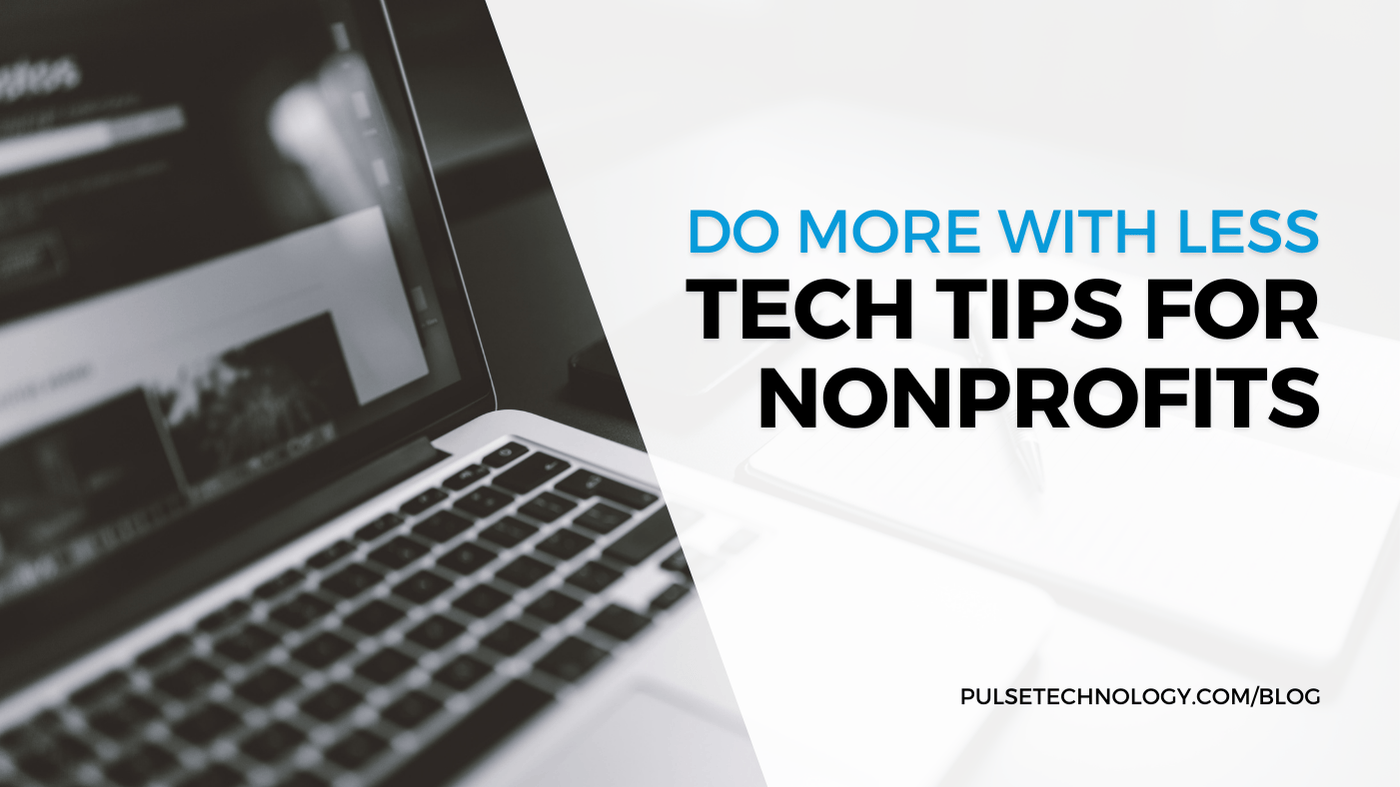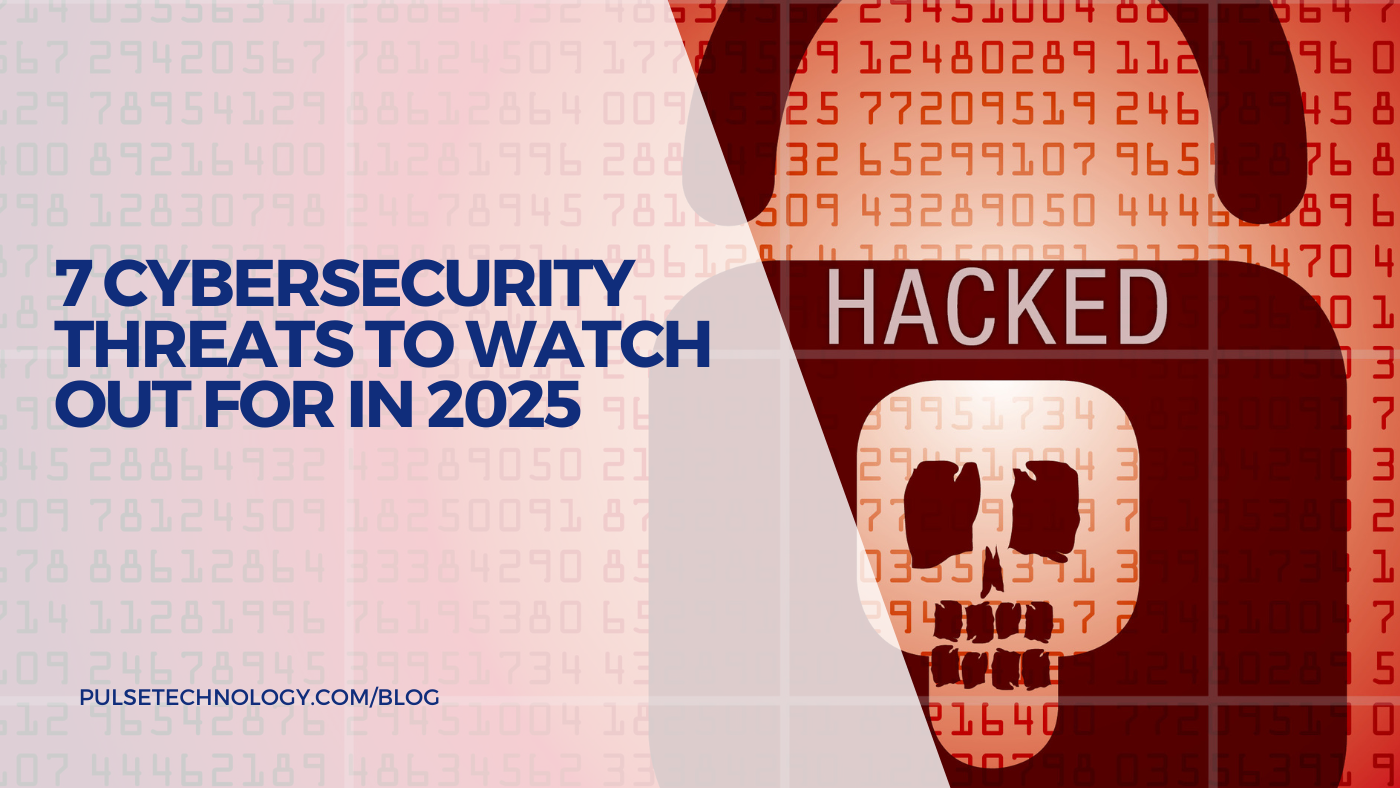Cybersecurity for Nonprofits: Risks, Tools, and Best Practices
Imagine dedicating years to your nonprofit’s mission, only to have it derailed by cybersecurity threats. A breached donor database or stolen beneficiary information can erode trust, devastate operations, and jeopardize the very heart of your mission. This blog will explore key concepts of cybersecurity for nonprofits and explore practical strategies you can implement to safeguard your organization’s data and reputation.
Understanding Cybersecurity for Nonprofit Risks
The nonprofit sector is the second most targeted sector for cyberattacks. Because nonprofits are often focused on their mission, cybersecurity might not receive the attention or investment it requires to prevent these attacks. This lack of proactive cybersecurity exposes organizations to significant risks and potential disruptions.
What are the 5 Common Cyber Threats Facing Nonprofits?
Nonprofits face various cyber threats that can jeopardize their data and financial security. In 2023, 27% of nonprofits worldwide have fallen victim to cyberattacks. Some common threats include:
- Phishing Attacks: Cybercriminals often use phishing email tactics, impersonating trusted sources like donors or staff to deceive employees or volunteers into revealing sensitive information such as passwords or financial data.
- Ransomware: Nonprofits are particularly vulnerable to ransomware attacks, where cybercriminals use malware to lock organizations out of their systems or data, demanding a ransom for access. This can cripple operations, especially if sensitive donor information is held hostage.
- Dark Web Data Breaches: A dark web data breach can occur when unauthorized individuals access sensitive data, such as donor details, financial records, or employee information.
- Insider Threats: Current or former employees, contractors, or volunteers with access to the organization’s systems can become insider threats, intentionally or unintentionally causing data breaches or theft.
- Weak Passwords and Authentication: Many nonprofits may not enforce strong password policies, which can lead to accounts being easily hacked. Weak or reused passwords are common entry points for cybercriminals.
Why Are Nonprofits Vulnerable to Cyberattacks?
Cybersecurity for nonprofits faces unique challenges, making them prime targets for cyberattacks. Let’s explore why nonprofits are at a higher risk and how these challenges can impact your security:
- Limited Cybersecurity Expertise: Protecting your nonprofit’s sensitive data can be challenging without dedicated IT staff or specialized knowledge. For instance, if you rely on volunteers unfamiliar with cybersecurity best practices, your systems may be vulnerable to hackers looking for weaknesses.
- Reliance on Third-party Service Providers: If you depend on cloud storage, payment processors, or other external vendors, your data could be at risk if these providers lack robust nonprofit cybersecurity measures.
- Lack of Awareness or Prioritization: Cybersecurity for nonprofits may not always be at the top of your mind when you're focused on your mission. Using outdated systems or unsecured methods like spreadsheets can leave your organization vulnerable to exploitation. In fact, nearly 70% of nonprofits lack documented policies and procedures to follow in the event of a cyberattack.
How to Conduct a Cybersecurity for Nonprofits Risk Assessment in 4 Steps
Kickstarting cybersecurity for nonprofits begins with understanding your vulnerabilities through a comprehensive risk assessment. A cybersecurity checklist for nonprofits serves as a practical, step-by-step guide to help you evaluate risks and safeguard your digital assets effectively. To simplify this process, here are four essential steps to assessing the risks of your organization:
- Identify Sensitive Data: Start by locating where sensitive information is stored, including donor details, financial records, and internal documents. This could involve databases, cloud services, or physical filing systems.
- Classify Data: Differentiate legally protected information, such as Social Security numbers or credit card details, from general records. Determining which data needs the highest level of protection helps you effectively prioritize your security efforts.
- Evaluate Threats: Analyze potential organizational risks, such as phishing scams, ransomware attacks, data breaches, or insider threats. Consider both external and internal sources of risk and how they could exploit your vulnerabilities.
- Review Access Points: Examine all possible digital and physical entry points into your systems, such as email accounts, shared drives, databases, or even office spaces. Determine who has access to these points and whether additional restrictions or security measures are necessary.
3 Best Practices for Cybersecurity for Nonprofits
To help safeguard your nonprofit cybersecurity, here are three best practices that can enhance your cybersecurity efforts:
1. Develop a Comprehensive Nonprofit Cybersecurity Policy
Cybersecurity for nonprofits starts with implementing strong password management practices. Require your staff to use password managers to store complex, unique passwords, ensuring that sensitive data like donor information is protected. Next, develop a clear incident response plan that outlines the steps to take when a cybersecurity breach occurs. This plan includes isolating compromised systems and notifying the authorities within a set time frame.
For instance, an animal shelter might establish procedures for locking down systems and reporting breaches within 24 hours. Finally, establish robust data protection protocols. This involves encrypting donor information both at rest and in transit, preventing hackers from intercepting sensitive data during online transactions.
2. Provide Staff and Volunteer Training
Training your staff and volunteers to be cyber-aware helps ensure that every nonprofit member understands their role in protecting organizational data and resources. You can do this by integrating nonprofit cybersecurity training during their onboarding process. For instance, when new volunteers sign up to help at an event, they should be required to complete basic cybersecurity for nonprofits training, such as recognizing phishing scams and securing devices.
Beyond onboarding, regular training sessions should be held to keep everyone updated on evolving threats and best practices. These sessions could cover topics like secure data handling, recognizing suspicious activity, and responding appropriately to potential cyberattacks.
3. Implement System Updates and Backups
Regularly updating your organization’s software helps protect against known vulnerabilities and prevent hackers from exploiting outdated versions. For example, automatic updates for critical systems, such as your donor database or financial software, ensure their security.
In addition, implementing automated backups to secure offsite cloud storage allows for quick recovery in case of data loss or a cyberattack. It’s also important to test backup systems regularly to ensure they function properly and data can be restored when needed.
Benefits of Managed IT Services for Cybersecurity for Nonprofits
If you don’t have the internal resources, consider outsourcing nonprofit cybersecurity to experts. Partnering with experts in cybersecurity for nonprofits ensures that your organization stays ahead of emerging threats. Managed IT services can offer:
-
24/7 Monitoring for Potential Threats: Managed IT services can continuously monitor potential threats before they cause harm. For example, a nonprofit supporting healthcare initiatives partnered with a managed IT service provider to monitor its email systems, preventing phishing attacks before they reached the staff.
-
Regular Vulnerability Assessments: Managed IT services can regularly assess vulnerabilities and proactively address weaknesses. These assessments can help identify potential security gaps that might otherwise go unnoticed.
-
Multi-Factor Authentication (MFA) Implementation: Outsourcing to managed services can streamline the implementation of MFA, a critical step in enhancing account security. A nonprofit arts organization might use MFA to protect access to its ticketing and donation platforms, adding an extra layer of security for donor data.
Case Study: Fellowship Housing's Cybersecurity Transformation
One example of how managed IT services have helped a nonprofit strengthen its security is the case of Fellowship Housing. Fellowship Housing faced cybersecurity risks due to outdated systems and insufficient employee training. Pulse Technology implemented robust cybersecurity measures to secure its network, trained staff to identify phishing threats, and provided a Virtual CIO to guide future tech initiatives.
Additionally, we transitioned the organization to Microsoft 365, boosting team collaboration and efficiency. This transformation empowered Fellowship Housing to focus on its mission with confidence in its enhanced security and technology.

Protect Your Nonprofit Cybersecurity with Pulse Technology
Your mission is worth protecting. Don’t let cybercriminals compromise your hard work. From risk assessments to managed IT services, adopting robust nonprofit cybersecurity practices is an investment in your nonprofit’s future. At Pulse Technology, we specialize in cybersecurity for nonprofits, offering tailored solutions to safeguard your operations and data.
With our expertise in cybersecurity for nonprofits, we’ll help you prevent threats and stay focused on what matters most. Contact us today, and together, we can secure your mission and strengthen your resilience.




